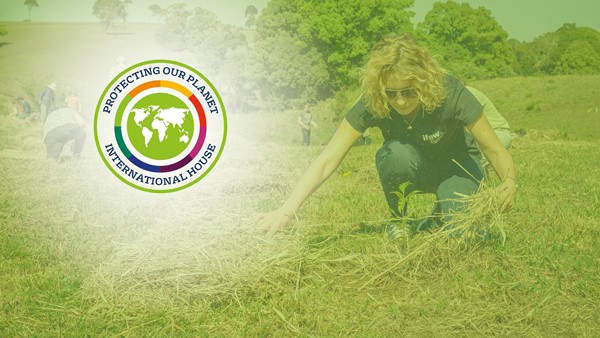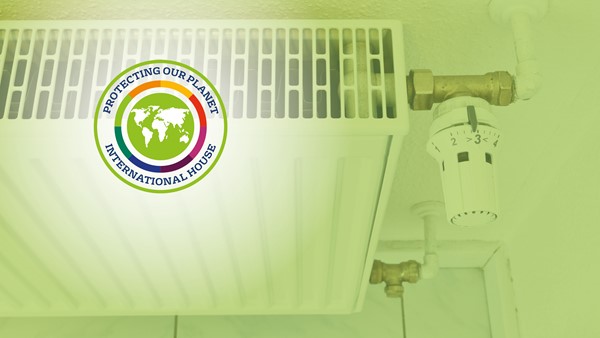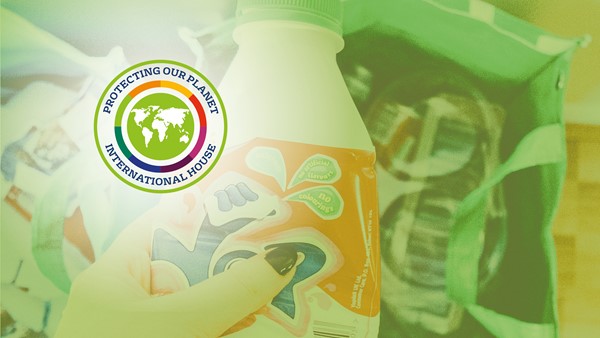Food food food. We need it, we eat it, we love it.
However, there are hidden environmental costs to all foods – from the clearing of natural habitats, to the use of irrigated water to grow it, the manufacturing costs to prepare it, and the transport costs of getting it onto your plate. Add to that the burping and farting of cows as they emit their own greenhouse gasses – it’s a minefield for protecting our planet.
But we have to eat, and for our own health and pleasure it’s important that we enjoy our meals.
Individual choice plays a huge role here. If you like steak and avocado, why not eat them? There is a great book, How Bad are Bananas which scientifically (and humorously) gives the carbon footprint of everything from a banana, to a Valentine’s Day rose, to a pair of shoes (not that we’re suggesting you eat those)... (How Bad are Bananas, Mike Berners Lee, 2010). Maybe you could use examples with your staff and students from time to time?
But if you run a school which provides food for students, is there anything you can do at school level? Are there any policies you could adopt?
Reduce air food miles
You are generally onto a winner if you reduce food that has been flown in by air freight. This usually has shorter shelf life, which is the reason it came in via airplane in the first place, so there is likely to be more food waste anyway. All the energy and effort that went into producing it is totally wasted if it’s thrown away. And of course, there are the CO2 emissions from the planes and the polluting emissions from the trucks distributing it around the country. If there are alternatives which are grown locally can you substitute them? This is not always possible, but even if you make a handful of changes, it can be positive.
Don’t immediately think that any food from overseas is bad. In the wonderful example of bananas, they grow in natural sunlight (and need no extra heating), are transported by sea freight (which is very low emissions), have their own packaging, and consequently have a relatively low carbon footprint.
Source local produce
If you have local suppliers – a bakery, a farm shop, a greengrocer’s, etc., this may reduce food miles as well as doing something to support your local community. This may not always be possible, and costs may be higher, but it’s worth considering. If you have students visiting your country from overseas, experiencing local food and produce may form part of their experience. Local markets are often places of great interest and a very rich source of linguistic experience allowing real interaction with locals.
When food is in season locally, it is generally tastier and getting it to you has less of a negative impact on the environment.
A little less coffee?
The carbon footprint of three large lattes per day, every day of the year, is equivalent of flying halfway across Europe. (Guardian, 7 Jun 2010). By contrast, the same amount of black tea works out about the same as a just one 50km drive in an average car.
We want a coffee; we love a coffee. You may have a coffee shop in your school. Subscribing to the nudge theory, maybe you could list the carbon footprint of each drink on the menu (just as some restaurants list the calorie count). This may encourage some people at least to change their habits and cut down a bit – and every little thing is positive.
A little less avocado?
If you are willing to cut down on something, avocados could be a good choice.
Although delicious and healthy, the world economic forum (Feb 2020) points out that this little piece of green gold is causing environmental havoc in its native Mexico (source).
Extensive avocado production in the one Mexican state of Michoacán – which produces half of all avocados globally! – has caused substantial environmental damage. Forest lands with diverse wildlife have been destroyed to produce avocado. Shrubs and old trees are often cut down to provide avocado trees more sunlight, contributing to deforestation and consequently to global warming and climate change. Around 9.5 billion litres of water are used daily to produce avocado – equivalent to 3,800 Olympic pools – requiring a massive extraction of water from Michoacán aquifers. This is not only depriving natural streams and rivers of free-flowing water which supports indigenous wildlife, but the effect is causing many small earthquakes in the region.
Then there is the cost of transporting these little green wonders around the globe, and the extra packaging which they usually come in to protect them. Perhaps we can do without avocado in our salads and guacamole with our tortilla chips!
A little less meat?
Food from animals is more carbon intensive than food from plants. The animals (cows, sheep, pigs, etc) spend a lot of the energy they have consumed from plants walking around and keeping warm. And they burp and fart, releasing greenhouse gasses (mostly methane) directly into the environment. In many countries across the world precious natural habitats are destroyed to create farmland for animals.
However, meat is nutritionally excellent for the human diet (we evolved to be omnivores after all) and is an important cultural part of many people’s diet around the world. Whilst it’s perfectly possible to have a heathy diet which is totally plant based, most people do not want to choose this. Perhaps cutting down a little is the best way forward.
We don’t want to demonise lattes, avocados and steaks, but we should not ignore the fact that they have a significant hidden environmental cost. If everybody gave a little thought to the wider impact they were having and ate a bit less of the environmentally bad stuff, that would be positive for all.
Read more about the IH Environmental Sustainability Scheme >>






